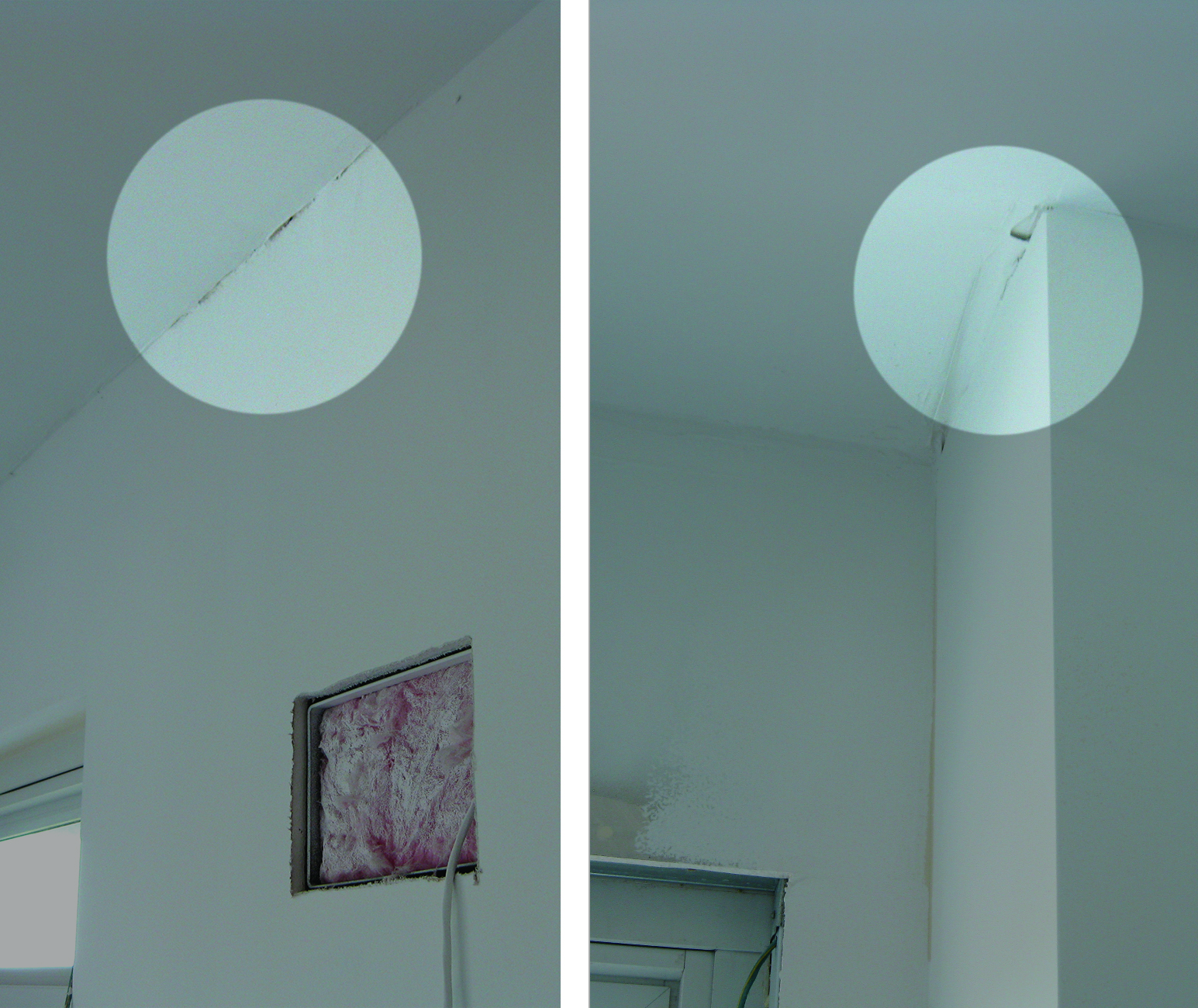The problems resulting from building deflection have likely troubled builders since the very first multistory building. Deflection is the bending of joists, trusses or rafters associated with overloaded structures. Typically, deflection causes unsightly cracks in the drywall along the inside corners where the wall meets the ceiling. Over time, deflection can worsen causing visual concerns, additional maintenance costs and structural problems.
 Typical damage caused by building deflection. Without Deflection Bead, building deflection is absorbed by the walls, causing cracking and blisters.
Typical damage caused by building deflection. Without Deflection Bead, building deflection is absorbed by the walls, causing cracking and blisters.
In Chicago, Denk & Roche Builders noticed that some previously constructed multistory buildings had inside corner cracking due to deflection. When commissioned to complete two 11-story retirement community buildings, Denk & Roche Builders wished to combat unsightly cosmetic damage and structural concerns caused by deflection. To prevent deflection damage, Denk & Roche Builders turned to Trim-Tex Wall Mounted Deflection Bead.
Trim-Tex Wall Mounted Deflection Bead features a coextruded flexible gasket that compresses under deflection pressure, preventing drywall cracks and blisters. To effectively combat deflection troubles, Deflection Bead is installed at the head of wall detail where it can withstand up to 7/16” of deflection movement. If the floor system springs back up the gasket expands back up, keeping it tight against the ceiling. Trim-Tex Deflection Bead protects the inside corner from cracks and pressure due to building deflection without compromising the design of the building. Deflection Bead also saves the building owner money by lowering building maintenance costs and reducing the likelihood of future deflection-related repairs.
For more information, visit www.trim-tex.com.
Related Stories
| Jun 18, 2014
Arup uses 3D printing to fabricate one-of-a-kind structural steel components
The firm's research shows that 3D printing has the potential to reduce costs, cut waste, and slash the carbon footprint of the construction sector.
| Jun 12, 2014
Austrian university develops 'inflatable' concrete dome method
Constructing a concrete dome is a costly process, but this may change soon. A team from the Vienna University of Technology has developed a method that allows concrete domes to form with the use of air and steel cables instead of expensive, timber supporting structures.
| Jun 6, 2014
Shipping container ship terminal completed in Spain
In Seville, Spain, architectural firms Hombre de Piedra and Buró4 have designed and completed a cruise ship terminal out of used shipping containers.
| May 22, 2014
Just two years after opening, $60 million high school stadium will close for repairs
The 18,000-seat Eagle Stadium in Allen, Texas, opened in 2012 to much fanfare. But cracks recently began to appear throughout the structure, causing to the school district to close the facility.
| May 13, 2014
19 industry groups team to promote resilient planning and building materials
The industry associations, with more than 700,000 members generating almost $1 trillion in GDP, have issued a joint statement on resilience, pushing design and building solutions for disaster mitigation.
| May 2, 2014
Norwegian modular project set to be world's tallest timber-frame apartment building [slideshow]
A 14-story luxury apartment block in central Bergen, Norway, will be the world's tallest timber-framed multifamily project, at 49 meters (160 feet).
| Apr 9, 2014
Steel decks: 11 tips for their proper use | BD+C
Building Teams have been using steel decks with proven success for 75 years. Building Design+Construction consulted with technical experts from the Steel Deck Institute and the deck manufacturing industry for their advice on how best to use steel decking.
| Mar 21, 2014
Forget wood skyscrapers - Check out these stunning bamboo high-rise concepts [slideshow]
The Singapore Bamboo Skyscraper competition invited design teams to explore the possibilities of using bamboo as the dominant material in a high-rise project for the Singapore skyline.
| Feb 20, 2014
5 myths about cross laminated timber
A CLT expert clears up several common misconceptions and myths surrounding the use of wood as a building material.
| Feb 14, 2014
Scrap tires used to boost masonry blocks at Missouri University of S&T
Research could lead to blocks that use waste material and have seismic and insulating benefits.

















